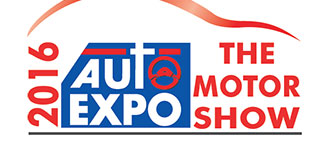
The automotive world is coming together at the 13th edition of the Auto Expo 2016 to be held in New Delhi during February 5-9.
Organized jointly by the Confederation of Indian Industry (CII), the Society of Indian Automobile Manufacturers (SIAM) and the Automotive Component Manufacturers Association of India (ACMA), the show is likely to witness presentation of latest products emphasizing the role of energy efficiency, alternate fuels, emission reduction and road safety.

The last edition of Auto Expo was held at a time when the economy was passing through a critical phase. Then the focus was on improving the total cost of ownership for end users and vehicles for multiple applications. Some of the initiatives taken by the Government related to alternate fuels and road safety never gained momentum until recently.
The overall CV volume during the last two years remained unaltered, but there had been segmental improvements / downfalls. While the M&HCV trucks and trailers segment improved a little, the LCV segment recorded a downtrend. The current year is expected to be a little stable as far as the overall industry performance is concerned.

RACE-RajeshKhanna-pic
Mr. Rajesh Khanna, COO, RACE Innovations
In the last two years, the transportation industry witnessed stiff competition. The progress recorded in the manufacturing sector in 2015 led to a modest improvement in goods movement, and at the current rate of setting superior standards on par with international markets, a further spurt in growth in the sector is expected.

Chart in C: Users Marimuthu Desktop MI-Jan-16 Balu-folder RACE R
Passenger movement had improved but more focus was shown towards alternate economical models, however with the new concerns on environmental pollutions and new initiatives on mass transportation we expect mass movements in buses.
The industry is also looking forward to the impending GST implementation. The new taxation system would help transporters in opting for or investing on higher capital equipment with a capacity to carry more goods and high-end luxury buses for greater passenger comfort. Also expected is consolidation of warehouses in terms of creation of centrally-located bigger units with adequate infrastructure, efficient processes and advanced transportation equipments.
RACE-Table-1
The current year is expected to witness a wind of change in technology and regulatory systems supportive of the upcoming Motor Vehicle Act Amendment and Road Safety Standards. The Indian OEMs are set to build trucks compliant to the latest technologies, lesser tare weight (more load carrying capacity) and higher fuel efficiency.

Some encouraging developments in the OEM technology can be observed in the areas of transmission (automated-manual), brakes (auxiliary braking systems), higher hp engines with electronic diesel control system (EDC), suspension systems moving from mechanical to pneumatic and the expected shift in emission standards to BS IV by 2017 and to BS VI for all vehicles from 2021 onwards. Further, exploring alternate fuel (hybrid and ethanol) will help reduce dependency on the conventional fossil fuels. With all this, the OEMs require adequate infrastructure planning for technology and after-sales support.
By Rajesh Khanna, COO, RACE Innovations





